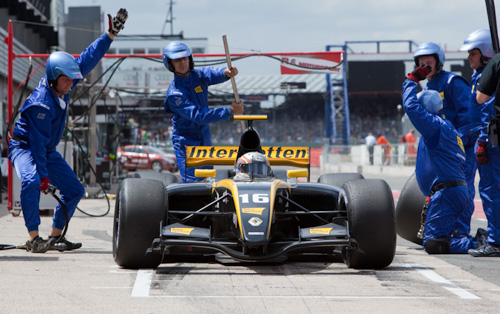Are you investing in new IT equipment – or for that matter, any IT services including SaaS/Cloud services? If so, I wonder how much you have invested in your operations management people, processes, and tools? Or are your operations team left to catch up on their own when you introduce new equipment, technologies and IT services delivered by third parties via the cloud.
If you are not investing in your operations management and IT services management processes at the same time as you invest in new IT equipment, you are potentially missing some of the biggest opportunities for return on your investments. Have a quick review of the video below and I’ll explain.
Before I continue, I’d like to acknowledge my colleague Morgan Hamilton for the inspiration for this blog. He used the racing car analogy in one of his slide presentations recently that the perfectly captures the challenges that many operations management teams face as new technologies are introduced into their IT environment. The photos come from another Cisco colleague, John Seymour. (For more of John’s photography, see thebaldphotographer.com – photos used with his permission)

More than a few of us (I’ll put up my hand!) are probably all guilty of painting a glorious picture (Figure 1) of the “grand vision” at the start of a new initiative, “perfection will reign” – as illustrated by racing cars in Figure 1. We prepare the business case, justify the investment, perhaps not realising the full range of operational impacts. Indeed, perhaps the ops team are not involved in new purchase decisions at all – I’ve certainly see that in my past on regular occasions.

Now as many of us know from bitter experience, in some cases, the production rollout will suffer challenges, perhaps even as catastrophic as the car exploding (Figure 2). In other words, the benefits outlined in the project vision are not as easy to attain as initially projected (or, even worse, ‘assumed’). In most cases, it is the organizational structure and culture, the operational procedures, and available toolsets that will be the difference between no or limited impacts and (as I’ve seen), 8 hour outages with customers including a major airline grounded!

Yet if we learn from this Formula One example, it’s not always the equipment (the car in our analogy) that makes the biggest difference to the business outcome (or race time). In the case of formula one, the people organization, process used and tools employed in the pit stop changeover can cut precious minutes off your time. You can be sure a lot of thinking went into improving the Formula One pit stop process (Figure 3), indeed a lot of up-front investment was almost certainly put in place in order to lean this particular process – to fantastic effect it has to be said.
In IT, it’s not just about troubleshooting processes. Provisioning and end user service delivery can be much improved by process improvement. Organizational design, too, is important. If you are moving from a discrete data center components (network, compute and storage), to unified infrastructure, it will more than likely aid productivity and improve system up-time to re-align your organizational structure, creating autonomous teams as opposed to silo’d network, compute and storage teams.
All of this has me thinking. When you invest in new equipment for your data center, network or IT environment, are you investing up front in the best troubleshooting processes, the best available productivity tools, and the best organizational model to really get the fastest time to value on your IT investment?

Cisco Services help many customers across the world design in new equipment. It’s not uncommon to find that the people, process and tools investment has not been made to accompany capital equipment investment. The net results include operational challenges, missed SLAs, and end customer/user satisfaction, and – of course – delayed return on investment.
While many customers engage Cisco Services for technology advise and architectural design expertise, it’s not as well know that over the past few years, we’ve been investing heavily in building our Operations Management teams and Cisco Services for Operations Transformation: Cisco Services has the expertise and experience to help you with the operations management challenges of new technology adoption.
To finish, then, with another car analogy, with Cisco’s Advisory and Implementation Services for Operations Management, we can, as Figure 4 illustrates, help you change the wheels while the car is on the race track!
follow @StephenSatCisco.
You made some good points. Thanks.